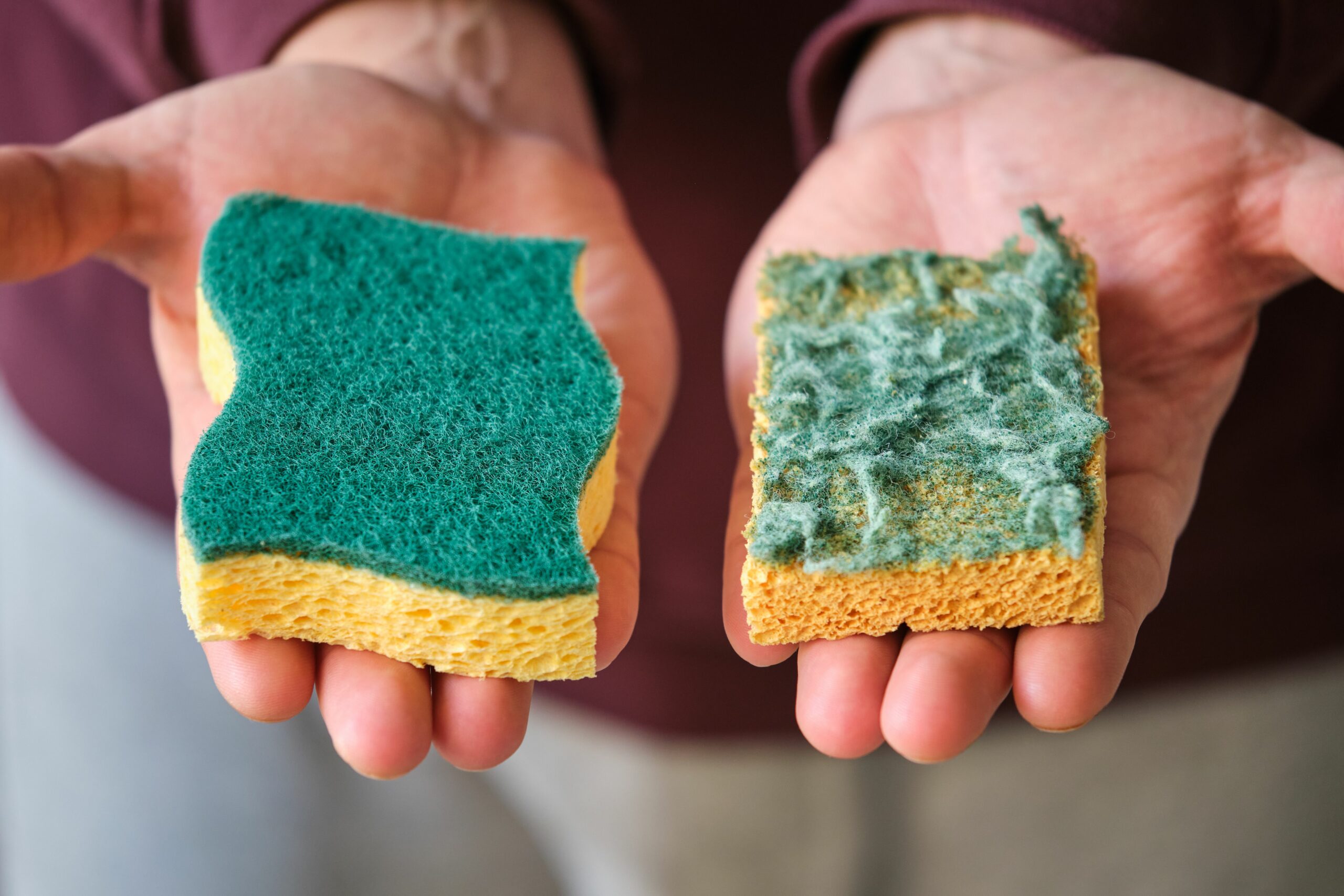Sponges are incredible absorbers, making them a household staple for cleaning up spills, wiping surfaces, and washing dishes. However, this absorption also makes sponges a home for bacteria, which quickly defeats their ability to clean.
According to a 2017 study from Scientific Reports, as many as 362 kinds of bacteria can live in your kitchen sponge, with the density of bacteria reaching up to 45 billion per square centimeter. This horde of bacteria is why Rhonda Wilson, an expert with more than 20 years in the cleaning industry, says you should frequently replace your sponges. Wilson offers her insight on when it’s time to let a sponge go and how to make a sponge last a little longer.
How Often Should You Replace Your Sponge?
Replacing your sponges every week is the sweet spot to hit, according to Wilson. This might sound excessive, but sponges are porous and hold onto food fragments and moisture. The longer you use a sponge, the more bacteria can build up, which is why it’s important to consistently switch out your sponges.
Depending on use, you might be able to get away with using the same sponge for a few weeks, but for cleanliness and peace of mind, one week is best, Wilson says. “Don’t wait for your sponge to reek before replacing it.”
Signs It’s Time to Replace Your Kitchen Sponge
Although you should generally switch out your sponge every week, this timeline can shift depending on how often you use the sponge and how well you maintain it. Even if it hasn’t been a week yet, the following signs are an indication that it’s time to grab a fresh sponge.
Odors: If your sponge smells despite multiple attempts to rinse it, it’s probably time to toss it out. A musty smell is a red flag for an accumulation of bacteria.
Texture: Any sort of flaking or a slimy appearance means your sponge is overdue for a replacement. Holding onto a sponge with a well-worn texture could result in smearing dirt and bacteria around instead of cleaning dishes or countertops.
Wear and Tear: When a sponge begins to fray, lose its shape, or break apart, you should replace it. A misshapen sponge is difficult to clean with and a sign you’ve likely had your sponge for too long.
How to Make Sponges Last Longer
Using a sponge for only a week might seem like a short time, but the good news is that proper maintenance can give your sponges a longer lifespan. Storing your sponges in the right environment and diligently cleaning them can delay the buildup of bacteria and keep them in top shape.
Wilson also recommends setting up a rotation for your sponges. Dedicating one sponge for dishes, one for surfaces, and one for tough grime can help you extend the life of your sponges, she says. It will also limit the opportunities for cross-contamination, particularly with raw meat.
However, Wilson also warns that even the best sponge care is not a long-term solution. While these maintenance tips will help you get the most out of your sponges, you should continue to retire them frequently. “It’s like putting a Band-Aid on a bigger issue—eventually, you just need a new sponge,” she says.
Proper Storage
Sponges can last longer if stored in a dry spot. Squeeze out all excess water after each use and avoid storing your sponge in a sink or in the splash zone of the faucet. If you’re unable to find a good resting spot, consider using a sponge holder. The drier your sponge, the longer it will last.
Cleaning
Cleaning a sponge with heat is an effective way to kill bacteria. Wilson says you can microwave your sponge for 1-2 minutes or toss it in the top rack of your dishwasher during a hot wash cycle.
Be sure your sponge is damp before sticking it into the microwave so it doesn’t catch fire.
It’s also possible to soak your sponges in a diluted bleach solution. Measure 1 Tbsp. of bleach per gallon of water and soak for 5 minutes. Finish the process by thoroughly rinsing the sponge with water.


